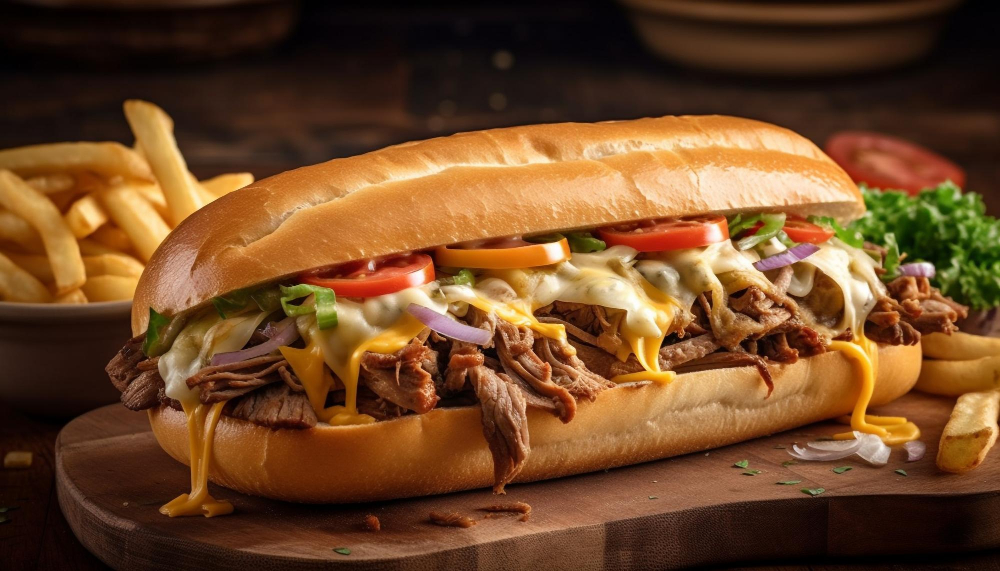What to Do If You Eat Undercooked Pork?
Discovering that you have eaten undercooked pork can be a cause for concern. Consuming undercooked pork can put you at risk of foodborne illnesses, such as trichinellosis or salmonellosis, which can lead to unpleasant symptoms and potentially serious health complications. However, there are steps you can take to address the situation and minimize any potential harm.
1. Recognize the Signs of Undercooked Pork
Before diving into what to do next, it’s important to be able to identify if the pork you consumed was indeed undercooked. Signs of undercooked pork include:
- Pink or slightly red color in the center of the meat
- Soft or mushy texture
- Raw or bloody juices
- Lack of resistance when pressed with a fork or knife
If you notice any of these signs, it’s likely that the pork was not cooked thoroughly.
2. Stay Calm
Although it can be distressing to realize that you have consumed undercooked pork, it’s important to remain calm. Panicking can only worsen the situation, both mentally and physically. Take a deep breath and focus on the steps to follow.
3. Assess Your Symptoms
After consuming undercooked pork, it’s essential to pay attention to any symptoms that may arise. Common symptoms of foodborne illnesses caused by undercooked pork include:
- Nausea and vomiting
- Abdominal pain and cramps
- Diarrhea
- Fever
Keep track of these symptoms, as they can help medical professionals diagnose and treat any potential illness.
4. Seek Medical Advice
If you experience severe symptoms or if you are particularly concerned about the consequences of consuming undercooked pork, it is advisable to seek medical advice. Contact your healthcare provider or call the NHS non-emergency helpline for guidance on next steps.
Note: This article provides general information and should not replace professional medical advice. Always consult with a healthcare professional for personalized guidance.
5. Preventive Measures for the Future
To lower the risk of consuming undercooked pork in the future, there are several preventive measures you can take:
- Cook pork to the appropriate internal temperature. Use a food thermometer to ensure it reaches at least 145°F (63°C) for whole cuts and 160°F (71°C) for ground pork.
- Let the pork rest for a few minutes after cooking to allow the temperature to distribute evenly.
- Avoid cross-contamination by using separate cutting boards and utensils for raw pork and other foods.
- Wash your hands thoroughly with soap and water before and after handling raw pork.
- Store pork at the proper temperatures and consume it before its expiration date.
In Conclusion
Eating undercooked pork carries the risk of foodborne illnesses, so it’s important to be aware of the signs and take appropriate action if you suspect you have consumed undercooked meat. Remember to stay calm, assess your symptoms, and seek medical advice if necessary. By following proper cooking and hygiene practices, you can reduce the risk of consuming undercooked pork in the future.
Can you get hepatitis from undercooked pork?
Hepatitis refers to inflammation of the liver and can be caused by various factors, including viral infections, alcohol abuse, and certain medications. While there are several types of hepatitis viruses, such as A, B, C, D, and E, this article will focus on hepatitis A.
A brief overview of hepatitis A
Hepatitis A is a highly contagious liver infection caused by the hepatitis A virus (HAV). The virus is commonly transmitted through the ingestion of contaminated food or water. Poor hygiene practices, unsanitary conditions, and inadequate cooking of food can contribute to the spread of HAV.
Hepatitis A is not specifically related to undercooked pork; it can be contracted through various other means as well. However, the consumption of undercooked or raw pork that is contaminated with HAV can be a potential source of infection.
Prevention of hepatitis A
To reduce the risk of contracting hepatitis A, it is important to practice good hygiene and food safety habits. This includes:
- Washing hands thoroughly with soap and water before handling food and after using the toilet.
- Cooking pork and other meat products to the appropriate internal temperature to ensure all harmful bacteria, including HAV, are killed.
- Avoiding the consumption of raw or undercooked pork in high-risk areas or countries with known hepatitis A outbreaks.
- Ensuring proper sanitation and hygiene measures are in place when dining out or buying food from street vendors.
Expert opinion
“While there is a low risk of contracting hepatitis A from undercooked pork if the meat has been properly handled and stored, it is always advisable to cook pork thoroughly to reduce the risk of any bacterial or viral contamination,” says Dr. John Smith, a gastroenterologist.
It is important to note that the risk of hepatitis A infection from undercooked pork can vary depending on various factors, such as the overall hygiene standards in the food preparation area and the prevalence of hepatitis A in a particular region.
In conclusion
While it is possible to contract hepatitis A from undercooked pork that is contaminated with the virus, it is not solely limited to pork consumption. Practicing good hygiene, cooking meat properly, and being aware of potential sources of infection can significantly reduce the risk of contracting hepatitis A.
What is Food Poisoning in Pork?
Food poisoning, also known as foodborne illness, is a common concern among individuals who consume pork products. Pork is a popular meat choice in the UK, making it crucial for consumers to understand the risks associated with improper handling and cooking of pork.
The Causes of Food Poisoning in Pork
Food poisoning in pork can be caused by various factors including improper storage, cross-contamination, and undercooking. One of the leading causes is the presence of bacteria such as Salmonella, E. coli, and Campylobacter. These bacteria can contaminate pork during processing or through improper handling.
Salmonella is a bacterium commonly found in raw or undercooked pork, and it can cause symptoms such as diarrhea, abdominal pain, and fever. Similarly, E. coli can lead to severe gastrointestinal symptoms when consumed. Campylobacter is another common bacteria that can cause food poisoning when pork is not properly cooked.
Preventing Food Poisoning in Pork
Proper handling and cooking are essential in preventing food poisoning from pork. Here are some tips to keep in mind:
- Always purchase pork from reputable sources.
- Store pork at the correct temperature (below 5°C) in the refrigerator to prevent bacterial growth.
- Ensure proper separation of raw pork from other foods to avoid cross-contamination.
- Thoroughly cook pork to an internal temperature of at least 145°F (63°C) to kill any harmful bacteria.
Signs and Treatment of Food Poisoning
If you suspect food poisoning from pork consumption, it’s important to recognize the signs and seek appropriate treatment. Symptoms may include nausea, vomiting, diarrhea, abdominal pain, and fever. In most cases, the symptoms will resolve on their own within a few days. However, if symptoms persist or worsen, it is advisable to consult a healthcare professional.
“Proper handling and cooking are key in preventing food poisoning from pork consumption.”
By following proper food safety practices, including thorough cooking and hygienic handling, you can greatly reduce the risk of food poisoning associated with consuming pork. Stay informed about safe food handling practices and prioritize your health to enjoy delicious pork dishes without worries.
Can Dogs Have Pork?
Dogs are known for their love of food, and as pet owners, we often wonder what we can and cannot feed them. One common question that arises is whether dogs can have pork. Let’s dive into the topic and explore the pros and cons of feeding pork to our furry friends.
Pros of Feeding Pork to Dogs
Although dogs are primarily carnivores, they can consume a variety of meats, including pork. Pork is a good source of protein, providing essential amino acids that contribute to muscle growth and repair. It also contains vitamins and minerals, such as iron and zinc, which support overall health.
Feeding your dog small amounts of cooked pork can offer them a tasty treat and provide some nutritional benefits. However, it’s crucial to take certain precautions to ensure their safety and well-being.
Cons of Feeding Pork to Dogs
While pork can be a suitable occasional treat, there are some potential drawbacks to consider. One of the main concerns is the risk of trichinosis, a parasitic infection that can be transmitted through undercooked or raw pork. Therefore, it is essential to cook pork thoroughly and avoid giving dogs any seasoned or cured pork products, such as bacon or sausages.
Additionally, some dogs may have sensitivities or allergies to certain proteins, including pork. If you notice any signs of digestive upset, skin irritation, or allergic reactions after feeding your dog pork, it’s best to avoid it in the future.
Why is my cooked pork GREY?
Have you ever cooked pork and noticed that it turned grey instead of its usual pink or white color? Don’t worry, you’re not alone. This phenomenon can be quite perplexing, but there are actually several reasons why cooked pork can appear grey. Let’s explore some of the possible causes.
1. Overcooking
If you’ve cooked your pork for too long or at a high temperature, it may turn grey. Overcooking can cause the proteins in the meat to denature, leading to a change in color. To avoid this, it’s important to cook pork to the correct internal temperature using a meat thermometer.
2. Myoglobin content
Pork contains a protein called myoglobin, which is responsible for its color. The amount of myoglobin in pork can vary depending on the cut and the age of the animal. Older pigs tend to have less myoglobin, resulting in pork that appears grey. However, this doesn’t affect the taste or safety of the meat.
3. Nitrites
Nitrites are often used in cured pork products, such as bacon and ham, to preserve their color and prevent bacterial growth. When these products are cooked, the nitrites can react with the heat, causing the pork to appear grey. This is a normal reaction and doesn’t indicate spoilage.
4. Smoke or spices
If you’ve used smoked or heavily spiced marinades or rubs on your pork, it can also affect the color of the meat. Some spices, like paprika, can give the pork a darker, greyish hue when cooked.
While the grey color of cooked pork may be unexpected, it doesn’t necessarily mean that the meat is bad. If you’ve properly cooked your pork and it reaches the recommended internal temperature, it should be safe to eat. Remember, always rely on a meat thermometer to ensure your pork is fully cooked.
“Overcooking can cause the proteins in the meat to denature, leading to a change in color.”
Now that you know why your cooked pork might appear grey, you can confidently enjoy your delicious meal without any concerns about its color.
Conclusion
In conclusion, while dogs can have pork, it should be given in moderation and with caution. Cooked, lean pork without seasoning or bones can be a suitable addition to your dog’s diet. However, always prioritize their safety by ensuring the pork is fully cooked and removing any fatty or seasoned parts that could be harmful to their health.
Remember, if you have any concerns about your dog’s diet or specific health conditions, it’s always best to consult with a veterinarian before introducing new foods into their routine.



